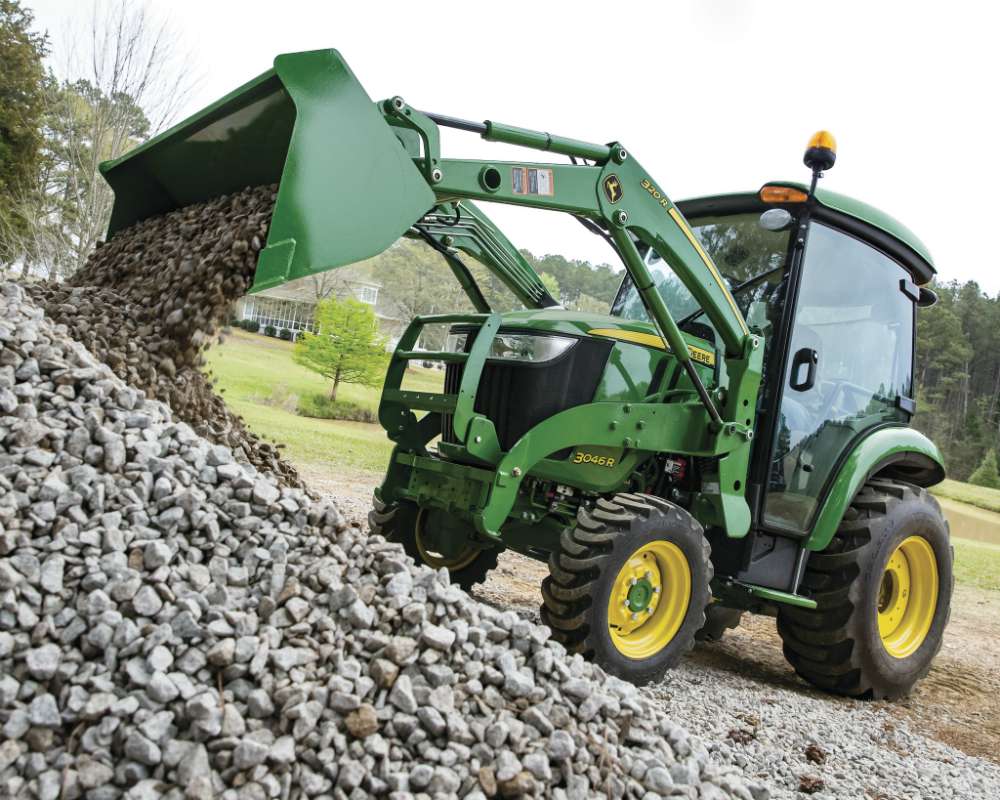Compact tractors are widely used in the construction industries and are considered to be extremely useful equipment for these purposes. Numerous tractor implements like backhoe loaders, buckets, draw-bars, and stabilizer bars specifically make the compact tractors helpful.
A compact tractor is a motor vehicle specially planned to provide high torque at a slow speed, for moving a trailer, or other applications. The trailer may be required for construction, agricultural, or other purposes. Several tractor implements are used with the tractor for numerous purposes. Compact tractors are normally categorized as two wheel drive, four wheel drive, or track tractors. The common tractor has two big driving wheels fitted with tractor tires, and the steering wheel in the center. The engine is fitted at the driver front, and the driven wheels under the engine section.
The fundamental configuration of yesterday’s tractors has not changed for a long period. Cabins are fixed on the latest types for operator comfort and safety. The bigger tractors are normally steered by hydraulic cylinders, along with the trailing unit. The older tractors have largely been replaced with the modern compact tractor. The major advancement in the compact tractor is the substitution of wheels or steel tracks with flexible rubber tracks that are steel reinforced. The tractor implements are plenty, including backhoe loaders, blades, buckets, concrete mixers, drawbars, rock rakes, and stabilizer bars. These tractor implements are used according to the tractor application.

Really old tractors obtained their power from steam engines. Since the beginning of the twentieth century, however, tractor power has been obtained from internal combustion engines. Until the middle of that century, gasoline was the main fuel, with ethanol and kerosene being the usual substitute. Cold starting was simple with gasoline. Frequently, a small secondary fuel tank was fitted to hold gasoline for engine warming and cold start. The primary tank held fuel that was suitable, or economical. Later, diesel power gained favor.
Tractor rating depends on the application, with small tractors being used for landscaping and minor construction work, while the bigger tractors are utilized on large construction projects. Liquefied petroleum gas has also been used as tractor fuel, but needs particular pressurized fuel containers and filling arrangement.

Construction is one of the most unsafe fields in engineering, maybe only exceeded by the mining industry. Tractor use has several hazardous features that need to be evaluated, and responded accordingly. The major risk in tractor application is the tractor overturns due to excessive or unbalanced loads. The roll over protection structure and seat belt are significant safety strategies for the operator protection during tractor overturn. Current tractors are fitted with rollover protection systems to prevent injury to operator on such occasions. It is vital to understand that these safety systems do not avoid tractor overturn. Rather, they work to provide operator safety in the event of an overturn. This is particularly essential in the open air tractors, where the operator is exposed directly to the metal parts of the tractor.

The engine power needs to be transmitted to the equipment needed to perform the desired work. This is achieved by using several arrangements, including a drawbar and hitch arrangement for towing or pulling, a pulley, or a power takeoff system. The older tractors were connected with the attachments by a drawbar or other connecting systems. The typical drawbar is basically a steel bar that is connected to the tractor. Alternately, it may be cast with the transmission housing. Some tractors were fitted with a fluctuating drawbar that was fitted at the center, or was offset, to permit easy tractor maneuvering. Drawbars unavoidably created a risk of tractor rollover that depended upon the traction torque. Such risks were particularly predominant with short-wheelbase tractors. As the mechanization advanced, other hitching arrangements were introduced like fixed mounts, three point hitches, and power take off systems. However, the drawbar is still considered to be one of the important tractor components still in active use today. Modern tractors are equipped with a power take-off shaft that provides rotary movement to machinery. This shaft is normally located at the tractor rear, and is linked to an implement being towed by a drawbar or by a three point hitch.




Comments are closed